If the lock keepers hadn’t gone on strike, the ship would have stayed in Basel last night and we would have had a full day there today. Instead, we sailed overnight to Breisach, Germany, a small but historic city of 15,000 citizens. We had a choice between a bus tour into Basel or taking a walking tour in Breisach; we chose to stay and explore.
Our guide, Johannes, met us at the ship and we walked a short distance along the Rhine until we got our first view of the walls of the city and our goal, St. Stephen’s Cathedral, atop the Long Path up the walls.

Johannes talked about the importance of wine to the area from ancient times through today; we passed the site of their annual wine fest, complete with statue of Bacchus with grapes.
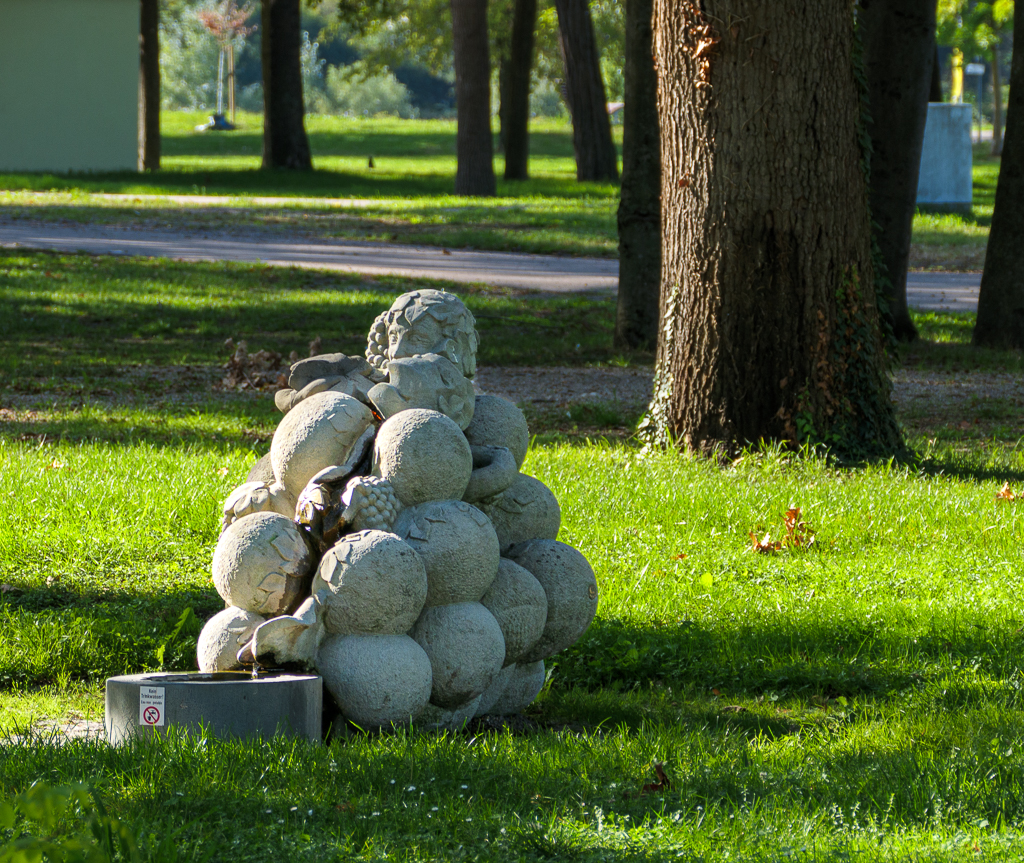
We continued through the Rhine Gate – it was easy for us to cross, but not so easy for the various invading armies through history.
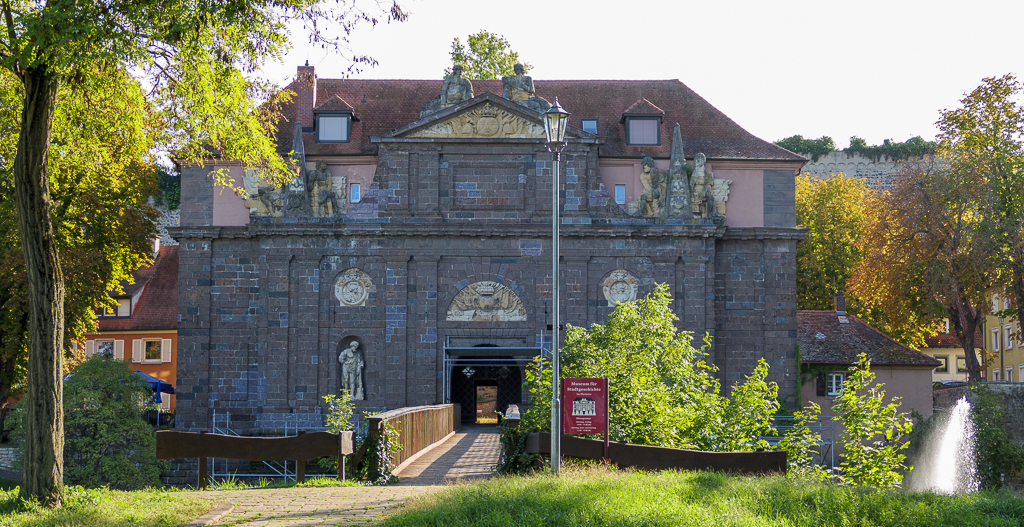
The Long Path began just inside the gate; it’s been there for a long time and was first documented in 1319. Today, there’s a cobblestone circle marking the start of the path – and a sign giving its history.
To commemorate this “first major work of the National Socialist city council” (as a contemporary article in the press called it) the cobblestone circle – with a swastika until 1945, and inscribed with the year 1933 – was created for the celebration marking completion of the work on 5 November, 1933. It now serves as a reminder of the start of the NS regime and, thus, of the darkest chapters in Germany’s history, and its victims.

The path wasn’t really all that long – we reached the top in about 15 minutes. We stopped briefly at the Radbrunnenturm, a treadle wheel well tower with a 41-meter-deep well shaft, driven by a wooden treadle wheel built beginning in 1198. It’s also served as a town hall, court, and torture chamber with prison and is now an exhibition and concert venue.
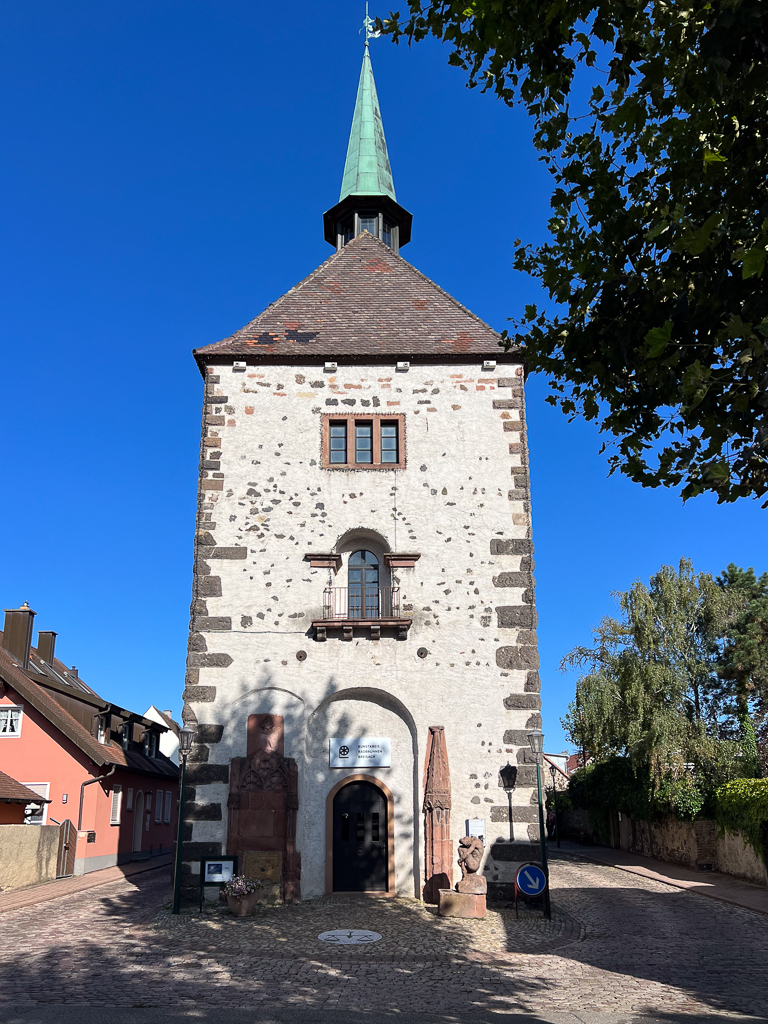
St. Stephens Cathedral was only a few steps away, but first we stopped to pay our respects to Europa, a symbol of Europe’s integration.

We walked around the church as Johannes told us about the history of Breisach, the unification of the Germanic tribes (it was Julius Caesar’s fault), and the bombing of the church in 1945 (the Allies used it as a marker and got too close).

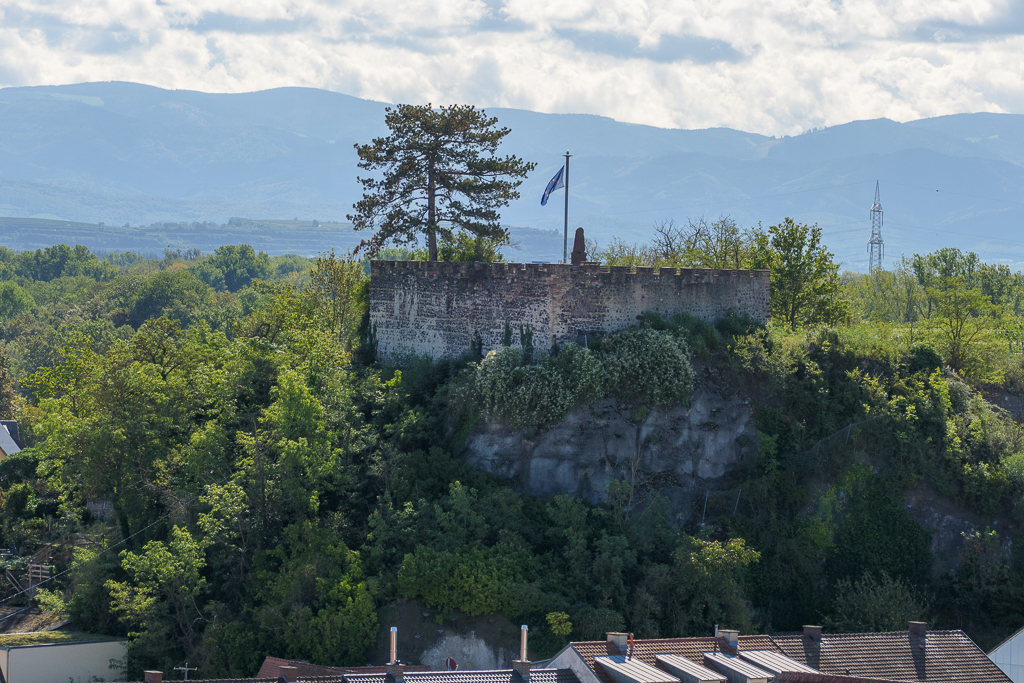
In 1978, the church’s crypt was transformed into a memorial for the city of Breisach.
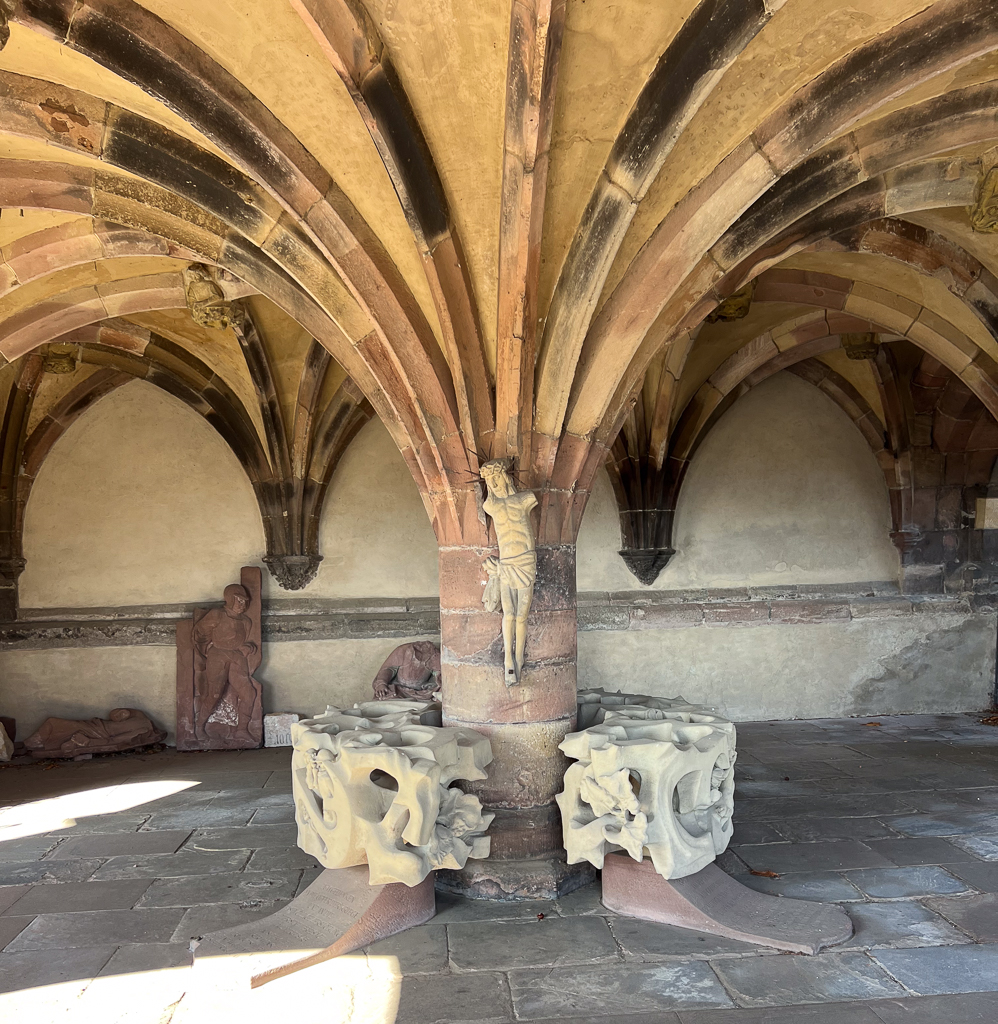

We left the church grounds and walked over to the city hall (Rathaus) in time to see a newly married couple emerge.

Johannes walked us back down to the market square and took his leave of us; we went back to the ship for a quick lunch, then returned to town for dessert – and a rainstorm. As soon as it ended, it was back to the ship to dry off!
A couple of hours later, the storms had passed, so Diane and I went back to Breislach for one last visit. Johannes had mentioned that we were near what used to be the Jewish quarter of town and we wanted to find it.
The street known today as “Rheintorstrasse” (Rhine Tower Street) was known as “Jüdengasse” (Jew Alley) before 1938; we followed it until we reached Blaues House, which was the center of the Jewish Community in Breisach before 1940.

It was owned by a Jewish congregation and used as a school and accommodation for teachers and the cantor. After Breislach’s synagogue was destroyed on Kristallnacht in 1938, the top floor was used as a prayer room until Breisach’s last Jewish citizens were deported on October 22, 1940.
Today, the building is owned by the “Ehemailges Jüdisches Gemeindhaus Breisach” (Association for the Blue House) and is a memorial site and educational establishment dedicated to the history of the Jews of the Upper Rhine. It’s only open on Wednesday and Sunday, so we couldn’t go in.

There was a memorial stone (not the usual “stumbling stone”) for Michael Eisemann, the last Cantor of the Breisach synagogue, and the square where the Blue House stands has been named for him. May his memory be for a blessing.
